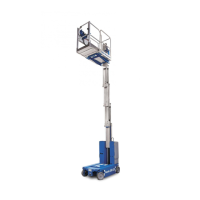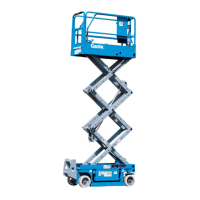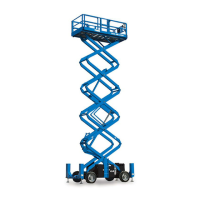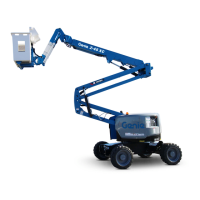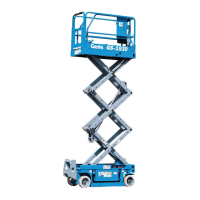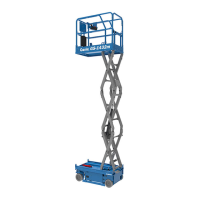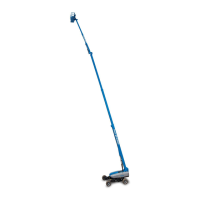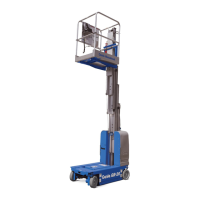May 2015Second Edition - First Printing
Part No. 57.0009.0607 GTH 4016 R - GTH 4018 R - GTH-5021 R 95
Keep the heavy part of the load closest to the
attachment.
Never drag or pull a load sideways.
Only lift a load vertically; do not pull a load
horizontally as it could cause excessive swinging
of the load.
The weight of all rigging (slings, shackles etc.)
must be included as part of the load.
Identify the proper lifting points of the load, taking
into consideration the center of gravity and load
stability.
Do not attempt to use the telehandler frame-
levelling to compensate for a swinging load or to
adjust the load after it has been raised.
Do not try to move fixed or obstructed loads.
Do not leave the telehandler unattended with a
suspended load.
Keep the boom and load as low as practical while
maintaining visibility in the direction of travel.
Do not exceed walking speed (2 mph / 3.2 km/h)
with a suspended load.
Start, travel, turn and stop slowly to prevent the
load from becoming unstable or swinging.
Do not use any controls to re-position the load
when traveling. Come to a gradual and complete
stop before attempting to re-position the load.
Do not attempt to cross inclines as the load
center will move towards the tipping line, thereby
reducing stability.
Only climb or descend inclines with extreme care
as the load center will move towards the tipping
line, thereby reducing stability
Do not park on a slope.
When driving on a rise with loaded material,
proceed in forward gear and travel with load in the
lowest possible position.
When sloping downward with loaded material,
proceed into reverse
When driving on a rise with empty shovel, proceed
into reverse.
When sloping downward with empty shovel,
proceed in forward gear.
Do not allow suspended loads to oscillate.
Do not drag loads when they are hooked up.
A suspended load has a dynamic, and therefore
an unpredictable effect on machine stability,
operate with caution.
The fixed hook has been designed to support
the load declared beside. The maximum payload
corresponds to the nominal capacity rating of the
handler on which it is installed and is indicated on
the load charts supplied with the equipment.
Attachments

